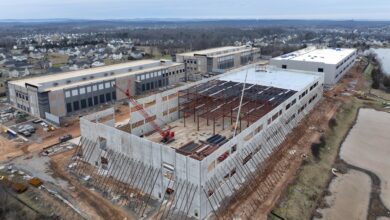
New Report Indicates Half of Residential Homes Sold to Investors
Residential Homes Get Boost to Values, But Raises Valid Concerns
MUNCIE, Indiana – Muncie Voice has been sharing with you how trillions of dollars are flowing into the financial sector to prop up Wall Street and housing prices since consumer demand (lack of money) cannot fuel the economy. Congress refuses to stimulate the economy for Americans, so the Fed is doing it directly with cash injections of $85 billion a month since the Great Recession hit in 2008. So, in addition to the major $13 trillion bailout in 2008-09, Wall Street has racked up an extra $5.1 trillion in monthly installments.
Some of this liquidity is flowing into the stock markets, but some of the dollars are finding their way into our communities, but in non-transparent ways.
For instance, according to a recent report completed by the Center for American Progress:
Over the past few years, institutional investors have quietly bought approximately
200,000 single-family homes at bargain prices and converted them into rental
homes. In some parts of the country, especially those areas that experienced deep
price declines during the 2007–2009 housing bust, these firms—along with
smaller cash investors—have bought more than half of all homes for sale.
If you want to know why housing prices have stabilized and increased in some areas, it’s because of institutional buyers, not individual home buyers.
On the surface, it may seem to be a good thing since real estate brokers receive a commission and home values increase, but it’s not really indicative of homeowners buying new houses or economic and social mobility. These homes are being purchased by institutional investors who then rent them out to tenants, keep part of the income for themselves, and then send the rest to investors.
As the report suggests, “We do not know whether these new landlords will be responsive to their tenants, maintain affordable rents, or properly care for their properties. We also do not know to what extent they are crowding out potential owner-occupants or artificially inflating home prices. Finally, we do not know what will happen to neighborhoods with a lot of investor activity if these investors withdraw, particularly if they leave the market as quickly as they entered it.”
These are all valid concerns.
The folks looking to buy a home at depressed values will pay a higher than expected price for their home due to investors.
Referring you to the last sentence of the above paragraph, “What happens if these investors leave the market as quickly as they entered it?”
The report indicates many of these deals are structured for 3 to 5 years which is a relatively short period considering most homeowners structure their loans over 15 to 30 years. This means investors weren’t comfortable going beyond a 5 year horizon. The groups structuring these deals will then have to refinance or sell the homes creating an unstable market in the near future.
As the report concludes, “While these risks exist regardless of how investors finance their operations, cheaper financing through securitization may propel industry growth, heightening these concerns. Policymakers need to pay close attention to these developments to protect consumers, ensure healthy housing markets, and limit risks to renters, neighborhoods, and financial markets that stem from misaligned incentives.”






